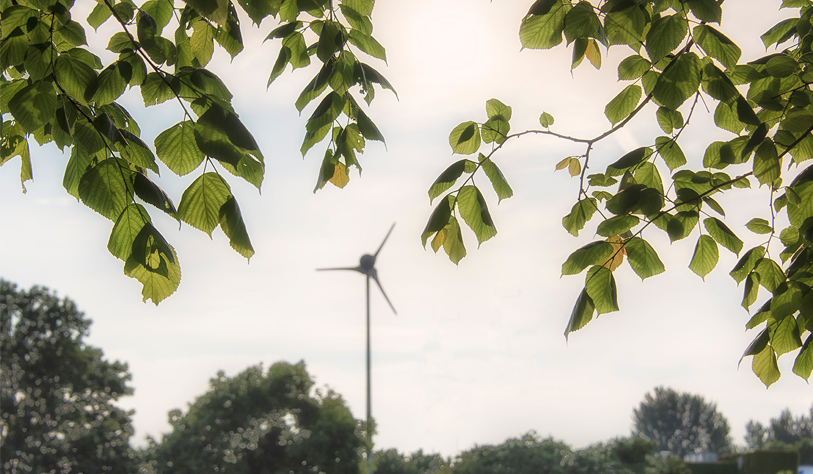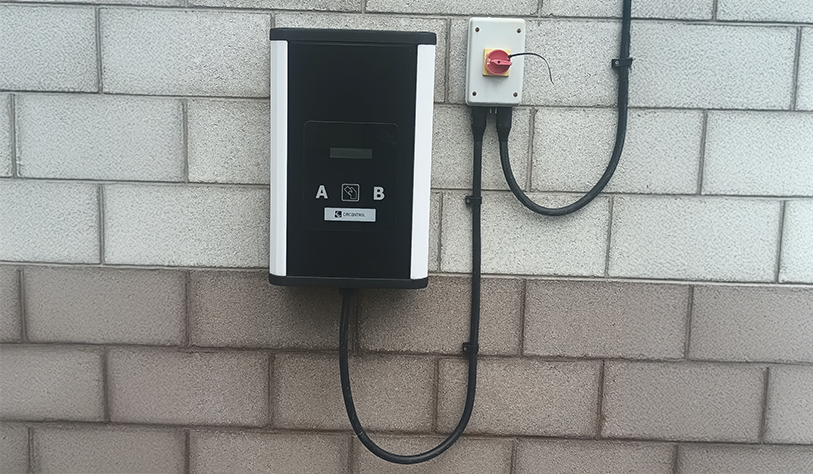Powering progress - The journey to a sustainable microgrid at TU Dublin

After more than a decade of vision, planning, and perseverance, a dedicated team at TU Dublin’s Tallaght campus has achieved a major milestone in clean and renewable energy innovation with the launch of a new a system that connects solar and wind power directly to the main building’s electricity grid, a huge step forward in sustainable energy for the university.
The core project team who developed the renewable-powered parallel grid at the Tallaght campus includes the technical and management team in what was formerly the Department of Electronics in Institute of Technology Tallaght (ITT), now the School of Electrical and Electronic Engineering.
As a public body under the National Climate Action Plan 2025, TU Dublin is mandated to reduce greenhouse gas (GHG) emissions by 51% in 2030, and to improve energy efficiency in the public sector by 50% by 2030. However, the transition to green renewable energy doesn’t happen overnight, and at TU Dublin project leads and decarbonisation teams are working to trial new innovations to reduce emissions and improve energy efficiency.
A decade-long journey to clean renewable energy
The journey began back in 2010 with the installation of a Proven 6kW micro turbine. By 2018, the team decided to go bigger and invest in a full microgrid. That’s when global technology leader in electrification and automation ABB joined the project to install a new control panel which will incorporate their new generation of smart circuit breakers and connection to their SaaS Microgrid Management system EDCS (a smart control system that will manage all the energy coming in and going out).
Despite delays from COVID-19 and technical hurdles, the team persevered. In June 2025, they officially switched on the parallel grid. Currently the infrastructure is running smoothly, supplying 30kW from 110 solar photovoltaic (PV) panels, while the wind turbine connects 6kW of electricity to the campuses Main Building. The team are monitoring the system, seeing exactly how much is being used, stored, or even sent back to the grid.

Supporting sustainability education and climate action through innovation
Currently the system is operating as a ‘parallel grid’, which means it works alongside the main electricity supply. But the ultimate goal is to run it as a fully independent microgrid. To get there, the team plans to install a powerful battery storage system (BESS) and activate an electric vehicle (EV) charger that’s already connected to the system. This 22kW (Dual AC 11kW) EV charger, capable of powering two EVs at once, will be one of the key energy users in the microgrid.

Looking ahead, the team hopes to secure funding to install a 56kW BESS and upgrade the micro wind turbine to a more efficient 9kW model.
Once complete, a fully commissioned microgrid would not only power the campus more sustainably but also serve as a hands-on learning and research tool for students and staff. Every part of the system will be metered, allowing users to see exactly how energy is being generated, stored, and used - or even sold back to the grid.
Thanks to the partnership with ABB, the system will also feature cutting-edge smart circuit breakers and connect to ABB’s cloud-based Microgrid Management platform (Software-as-a-Service (SaaS) Microgrid Management Electrical Distribution Control System (EDCS)) giving the team full control and insight into their energy ecosystem.
The finance needed to complete the project was made possible by funding from SATLE (Strategic Alignment of Teaching and Learning Enhancement) from the HEA/National Forum.
Shared Impact
This grassroots renewable energy project at TU Dublin’s Tallaght campus directly supports several of the United Nations (UN) Sustainable Development Goals (SDGs), particularly SDG 7: Affordable and Clean Energy by generating clean electricity from solar and wind sources, SDG 13: Climate Action by reducing greenhouse gas emissions in line with TU Dublin’s Climate Action Roadmap, and SDG 4: Quality Education by creating a real-world, hands-on learning environment for students and researchers. It also contributes to SDG 9: Industry, Innovation and Infrastructure through its partnership approach and the integration of cutting-edge smart grid technologies, showcasing how innovation and education can drive sustainable transformation.
This innovative project is more than just a technical achievement for the university, it can act as a test bed for what’s possible when vision, education, and decarbonisation come together.
At TU Dublin, innovation and teaching and learning (T&L) isn’t confined to theory in lecture halls - it will happens in a real world context, through hands-on experiences with industry and community partners. TU Dublin staff are to preparing students for the future, supporting them to ‘Go Beyond Learning’ and helping them make real impact.
